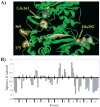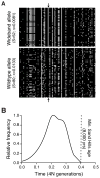Integrating evolutionary and functional approaches to infer adaptation at specific loci
- PMID: 20500215
- PMCID: PMC2981648
- DOI: 10.1111/j.1558-5646.2010.01044.x
Integrating evolutionary and functional approaches to infer adaptation at specific loci
Abstract
Inferences about adaptation at specific loci are often exclusively based on the static analysis of DNA sequence variation. Ideally,population-genetic evidence for positive selection serves as a stepping-off point for experimental studies to elucidate the functional significance of the putatively adaptive variation. We argue that inferences about adaptation at specific loci are best achieved by integrating the indirect, retrospective insights provided by population-genetic analyses with the more direct, mechanistic insights provided by functional experiments. Integrative studies of adaptive genetic variation may sometimes be motivated by experimental insights into molecular function, which then provide the impetus to perform population genetic tests to evaluate whether the functional variation is of adaptive significance. In other cases, studies may be initiated by genome scans of DNA variation to identify candidate loci for recent adaptation. Results of such analyses can then motivate experimental efforts to test whether the identified candidate loci do in fact contribute to functional variation in some fitness-related phenotype. Functional studies can provide corroborative evidence for positive selection at particular loci, and can potentially reveal specific molecular mechanisms of adaptation.
Figures









References
-
- Andolfatto P. Adaptive evolution of non-coding DNA in Drosophila. Nature. 2005;437:1149–1152. - PubMed
-
- Arnold SJ. Behavioral variation in natural populations. II. The inheritance of a feeding response in crosses between geographic races of the garter snake, Thamnophis elegans. Evolution. 1981;35:510–515. - PubMed
